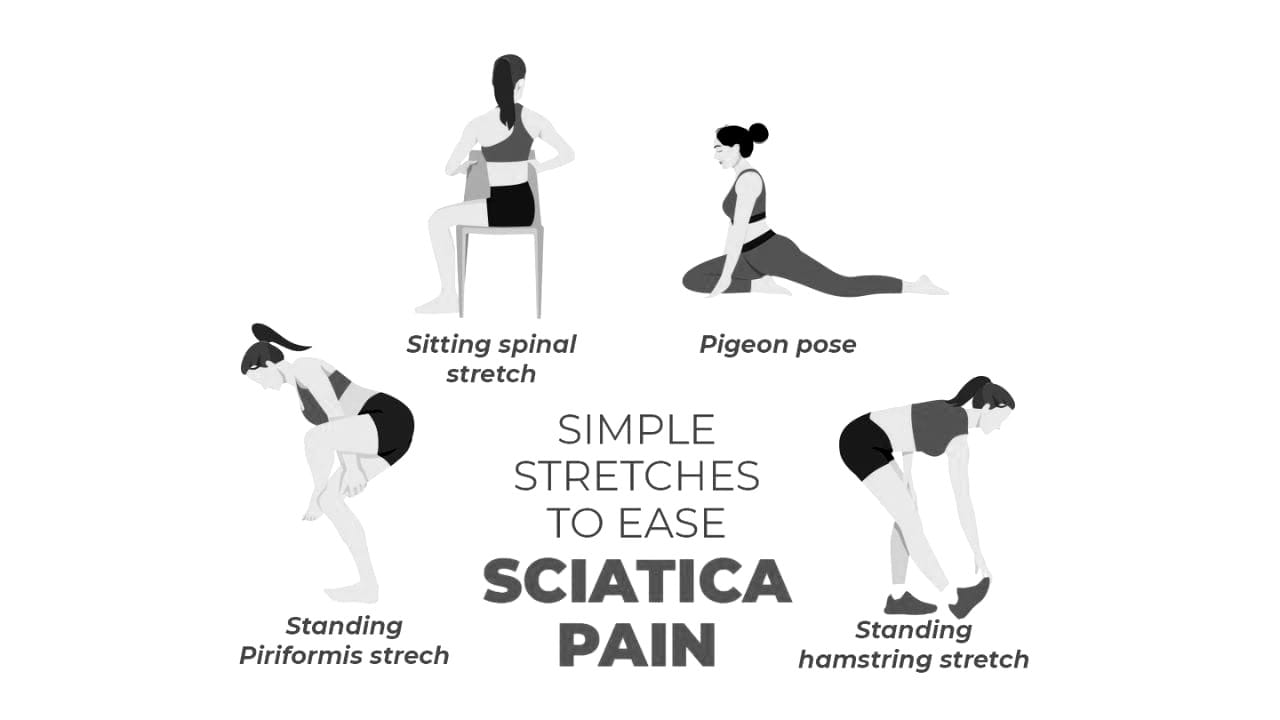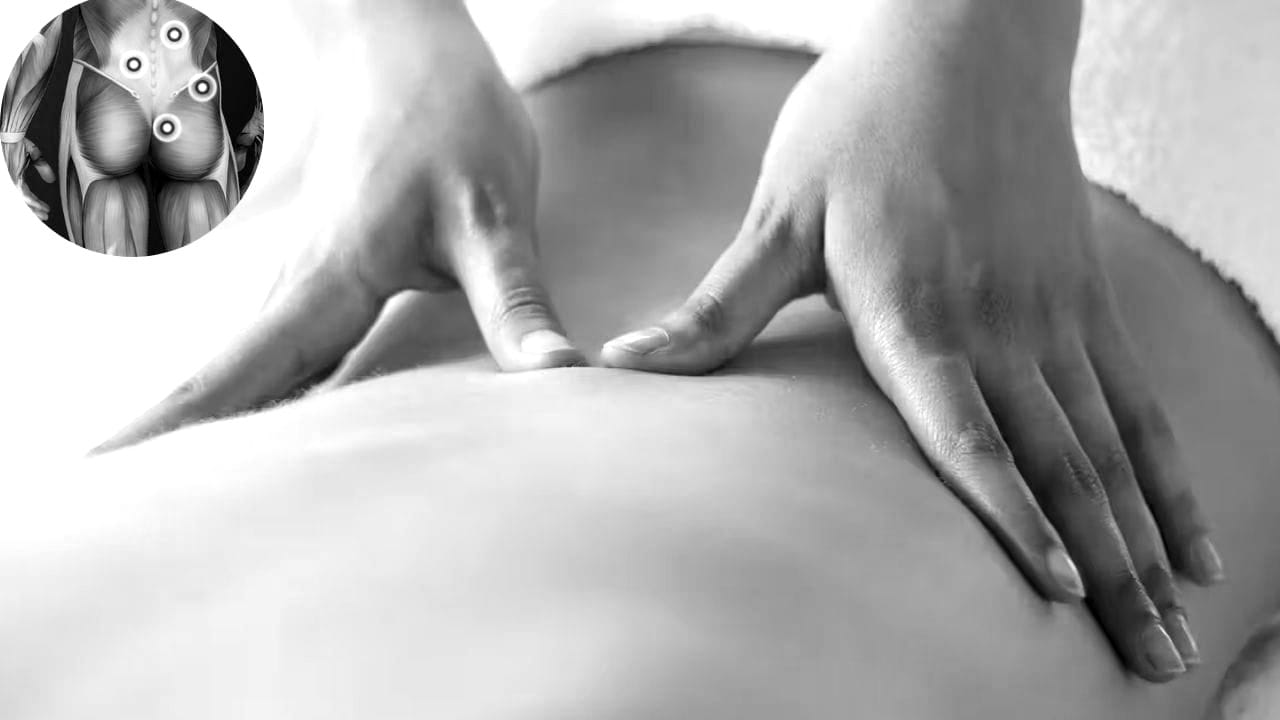How Do I Get My Sciatic Nerve To Stop Hurting? Relief & Recovery Tips
From immediate relief techniques and tailored exercises to dietary adjustments, discover a comprehensive guide to ease pain and restore comfort in your sciatic journey.

Sciatica can be a real pain in the back, quite literally. If you're among the many who suffer from this sharp, sometimes debilitating pain that travels from your lower back down to your legs, you're likely seeking relief. This article is designed to provide you with comprehensive information on how to alleviate sciatic nerve pain.
Key Takeaways:
- Understand the causes of sciatic nerve pain and identify symptoms.
- Learn about non-invasive treatments and exercises that can provide relief.
- Know when to seek professional medical advice for sciatic nerve pain.
Identifying the Symptoms
The hallmark sign of sciatica is pain that radiates from your lower (lumbar) spine to your buttocks and down the back of your leg. This pain can vary widely, from a mild ache to a sharp, burning sensation or excruciating discomfort.
Sometimes it can feel like a jolt or electric shock. Sciatic nerve pain can be aggravated by prolonged sitting or sudden movements.
Non-Invasive Treatments
For many people, sciatica responds well to self-care measures. These may include over-the-counter pain relievers, hot or cold packs, and gentle exercises. It's important to stay active, as bed rest can worsen the condition.
However, avoid heavy lifting or twisting your back for the first six weeks after the pain begins.
Exercises and Stretching
Stretching exercises for your lower back can help relieve nerve root compression, alleviating sciatic pain. A simple regimen that includes exercises like knee-to-chest stretches, pelvic tilts, and lumbar rotations can make a significant difference.

Remember to be gentle with your body and avoid any movements that cause pain or discomfort.
Physical Therapy
Physical therapists can provide various treatments, such as McKenzie exercises or spinal stabilization, to help manage sciatic pain.
They can also teach you how to modify your postural habits and incorporate ergonomic principles into your daily activities to reduce the strain on your sciatic nerve.
Proper Posture
Maintaining proper posture is essential for alleviating sciatic nerve pain. Slouching can put too much pressure on the lower back, exacerbating sciatica symptoms.
Using ergonomic furniture and maintaining a neutral spine can help reduce the pressure on your sciatic nerve.
Use Hot and Cold Packs for Quick Sciatic Pain Relief
Heat and cold therapy serve as effective and accessible home remedies for managing sciatica pain. Applying heat, such as with a hot compress or warm bath, can help relax muscles, alleviate stiffness, and promote blood flow to the affected area.
The warmth penetrates deep into the tissues, providing a soothing sensation that can ease tension along the sciatic nerve. On the other hand, cold therapy, often applied through ice packs or cold compresses, is valuable for its anti-inflammatory properties.
Cold helps to constrict blood vessels, reducing swelling and numbing the area, offering temporary relief from the pain associated with sciatica.
For individuals with sciatica, experimenting with both heat and cold applications can help determine which therapy is more effective in providing comfort and aiding in the overall management of sciatic nerve pain from the comfort of home.
Medications and Pain Relief
Medications play a crucial role in pain relief, providing accessible solutions for managing various discomforts.
Over-the-counter pain relievers, like acetaminophen or ibuprofen, work to alleviate mild to moderate pain by reducing inflammation and blocking pain signals.
Prescription medications, including opioids or muscle relaxants, may be prescribed for more severe pain conditions. It's important to use medications as directed by healthcare professionals, considering potential side effects and interactions.
These drugs offer a valuable tool in the toolkit of pain management, complementing other approaches such as physical therapy and lifestyle adjustments, ensuring a holistic and personalized approach to achieving relief from pain.
Alternative Therapies
Some people find relief from sciatica through alternative therapies such as acupuncture, chiropractic adjustments, or massage therapy.

These treatments can help reduce muscle tension and improve spinal alignment, potentially relieving the pressure on the sciatic nerve.
Lifestyle Changes and Prevention
Lifestyle changes and prevention strategies form the foundation for a healthy and pain-free life.
Simple adjustments, like maintaining good posture, practicing regular exercise, and incorporating a balanced diet, contribute significantly to overall well-being.
Engaging in activities that strengthen core muscles and promote flexibility, such as walking or yoga, can prevent muscle imbalances and reduce the risk of conditions like sciatica.
Additionally, avoiding prolonged sitting, staying hydrated, and managing stress through relaxation techniques are essential lifestyle choices that play a key role in preventing various health issues.
These straightforward yet impactful changes empower individuals to take control of their health, fostering a lifestyle that promotes longevity and resilience against common ailments.
Summary
Sciatica can be a challenging condition, but with the right approach, you can manage the pain effectively. Understanding the symptoms and causes is the first step to finding relief. Non-invasive treatments like exercises, physical therapy, and medications are often successful in alleviating pain. Alternative therapies and lifestyle changes can also play a significant role in managing and preventing sciatic nerve pain. If your symptoms are severe or persistent, it's important to consult with a healthcare professional to explore all available treatment options, including surgery.
FAQ Section
Q 1: What Immediate Steps Can I Take to Stop Sciatic Nerve Pain?
Answer: Sciatic nerve pain, also known as sciatica, can be extremely uncomfortable and debilitating. It typically radiates along the path of the sciatic nerve, which extends from the lower back through the hips and down each leg. Here are some immediate steps you can take to alleviate sciatica:
1. Apply Cold or Heat Therapy
- Cold Therapy: Apply an ice pack or a bag of frozen peas wrapped in a towel to the affected area for 15-20 minutes several times a day. Cold therapy can reduce inflammation and numb the pain.
- Heat Therapy: After 48 hours of cold therapy, switch to a heating pad or warm compress. Apply it to the lower back for 15-20 minutes to relax the muscles and improve blood flow.
2. Over-the-Counter Pain Relief
- Non-Steroidal Anti-Inflammatory Drugs (NSAIDs): Medications like ibuprofen (Advil, Motrin) or naproxen (Aleve) can help reduce inflammation and alleviate pain.
- Acetaminophen: If you cannot take NSAIDs, acetaminophen (Tylenol) can help manage the pain.
3. Gentle Stretching and Exercise
- Stretching: Gentle stretching exercises can help relieve the pressure on the sciatic nerve. Poses like the pigeon pose, knee-to-chest stretch, and seated spinal stretch are beneficial.
- Low-Impact Exercise: Activities like walking, swimming, or yoga can keep your spine flexible and strengthen the muscles supporting your back.
4. Maintain Good Posture
- Sitting Posture: Use an ergonomic chair that supports your lower back. Sit with your feet flat on the floor, and avoid crossing your legs.
- Standing Posture: Stand up straight with your weight evenly distributed on both feet. Avoid slouching or leaning to one side.
5. Modify Your Activities
- Avoid Prolonged Sitting or Standing: Take frequent breaks to walk around and stretch.
- Use Proper Lifting Techniques: Bend at the knees and keep your back straight when lifting objects. Avoid twisting your torso.
6. Stay Hydrated
- Drink Water: Staying hydrated helps maintain the elasticity of spinal discs and reduces the risk of injury.
7. Mind-Body Techniques
- Relaxation Techniques: Practices such as deep breathing, meditation, or mindfulness can help manage pain and reduce stress.
8. Seek Professional Help
- Physical Therapy: A physical therapist can design a personalized exercise program to improve your strength, flexibility, and posture.
- Chiropractic Care: A chiropractor can perform spinal adjustments to relieve pressure on the sciatic nerve.
- Acupuncture: Some people find relief from sciatica through acupuncture, which involves inserting thin needles into specific points on the body.
When to See a Doctor
If your sciatica pain is severe, persists for more than a week, or is accompanied by other symptoms like numbness, tingling, or muscle weakness, it's important to see a healthcare professional. They can provide a thorough diagnosis and recommend appropriate treatment options, which may include prescription medications, physical therapy, or even surgery in severe cases.
Conclusion
While these immediate steps can help alleviate sciatic nerve pain, it's essential to address the underlying cause and prevent future episodes. Incorporate regular exercise, maintain a healthy weight, and practice good posture to keep your spine healthy. If your pain persists, consult with a healthcare professional for a comprehensive treatment plan.
Q 2: How Does Exercise Contribute to Alleviating Sciatic Nerve Pain?
Answer: Regular exercise is a key component in stopping sciatic nerve pain. Engaging in activities that strengthen the core muscles, such as swimming, walking, or yoga, helps support the spine and reduces pressure on the sciatic nerve.
These exercises enhance flexibility and promote overall spine health, contributing to a reduction in sciatica symptoms.
Q 3: Can Dietary Changes Help Relieve Persistent Sciatic Nerve Pain?
Answer: Yes, dietary adjustments can play a role in alleviating sciatic nerve pain. Consuming anti-inflammatory foods, including fatty fish, fruits, vegetables, and whole grains, can help reduce inflammation.
Staying adequately hydrated supports spinal disc health, and maintaining a healthy weight can lessen pressure on the sciatic nerve. Incorporating these dietary changes can contribute to a comprehensive approach to stopping persistent sciatic pain. Yes, dietary changes can potentially help relieve persistent sciatic nerve pain. While diet alone may not completely cure sciatica, certain foods can reduce inflammation, support nerve health, and contribute to overall pain management. Here are some dietary considerations that might help alleviate sciatica symptoms:
1. Anti-inflammatory Foods
Reducing inflammation is key in managing sciatic pain. Incorporate these anti-inflammatory foods into your diet:
- Fruits and Vegetables: Berries, cherries, oranges, spinach, kale, and broccoli are rich in antioxidants and vitamins that help fight inflammation.
- Omega-3 Fatty Acids: Found in fatty fish like salmon, mackerel, and sardines, as well as in flaxseeds and walnuts, omega-3s have potent anti-inflammatory properties.
- Nuts and Seeds: Almonds, chia seeds, and sunflower seeds can help reduce inflammation and provide essential nutrients.
2. Whole Grains
Whole grains like oats, quinoa, and brown rice are preferable over refined grains. They have a lower glycemic index and help maintain stable blood sugar levels, which can reduce inflammation.
3. Lean Proteins
Protein is vital for tissue repair and overall health. Opt for lean proteins such as chicken, turkey, tofu, and legumes. These proteins can support muscle strength and recovery, which is beneficial for sciatica sufferers.
4. Healthy Fats
Incorporate healthy fats from sources like avocados, olive oil, and coconut oil. These fats can help reduce inflammation and support nerve health.
5. Vitamin B12 and Magnesium
Vitamin B12 and magnesium are crucial for nerve function. Deficiency in these nutrients can exacerbate nerve pain. Include foods like eggs, dairy products, leafy greens, bananas, and nuts to ensure adequate intake.
6. Stay Hydrated
Proper hydration is essential for overall health and can help reduce pain and inflammation. Aim to drink at least 8 glasses of water a day.
7. Avoid Inflammatory Foods
Certain foods can increase inflammation and should be limited or avoided:
- Processed Foods: These often contain trans fats, high sugar, and unhealthy additives.
- Sugary Foods and Beverages: High sugar intake can lead to increased inflammation.
- Refined Carbohydrates: Foods like white bread, pastries, and sugary cereals can spike blood sugar and inflammation levels.
- Alcohol: Excessive alcohol consumption can lead to increased inflammation and interfere with pain management.
Conclusion
While dietary changes alone may not be a cure for persistent sciatic nerve pain, they can play a significant role in managing and potentially reducing symptoms. A balanced diet rich in anti-inflammatory foods, whole grains, lean proteins, and healthy fats, coupled with proper hydration, can support overall health and help alleviate sciatic pain. Always consult with a healthcare professional before making significant dietary changes, especially if you have underlying health conditions.
